Speed & Smarts: Searching for the Best Lead Position
Jib lead position works like the main outhaul. Moving the jib/genoa lead fore and aft affects foot depth, much like the outhaul controls foot depth on a mainsail.
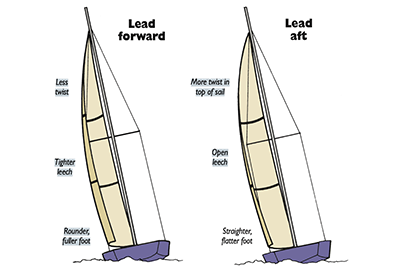
Jib lead position works like the main outhaul. Moving the jib/genoa lead fore and aft affects foot depth, much like the outhaul controls foot depth on a mainsail.
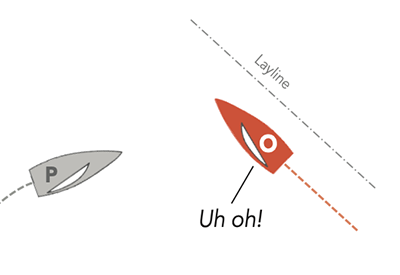
Except for the starting line, the windward mark is usually the most congested part of the course. It’s the first point in the race where all the boats come together again, and for this reason it presents many potential pitfalls.
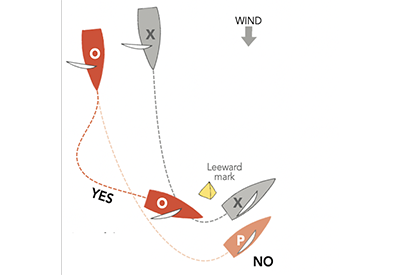
In most situations, faster is better because the goal of racing is to get to the finish line as quickly as possible and beat the other boats. But once in a while you need to slow down.

Almost every sailor realizes the importance of making a strategic plan for the first leg before they start the race. But how many of those sailors also develop a strategy for every other leg in the race?
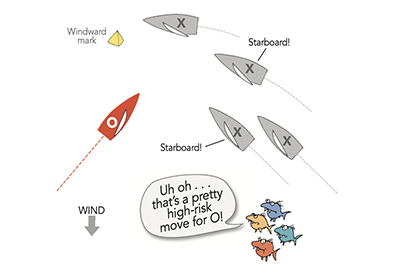
The marks of the course are often critical in determining how boats cross the finish line. That’s because mark roundings bring the entire fleet together into one small, congested spot.
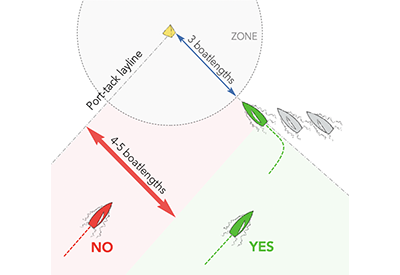
The windward mark is the first point where all the boats come back together after the start. It’s usually crowded and contentious and can have a significant impact on the outcome of the race.
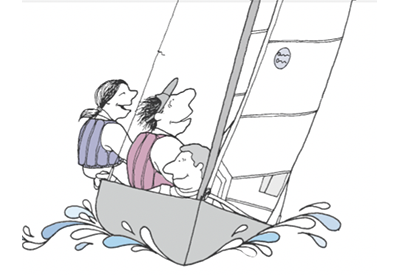
One of the big differences between racing in light air versus heavy air is that it’s usually a lot more difficult to execute good boathandling maneuvers when it’s breezy. This is not surprising. More wind means boats go faster and bounce around a lot more (because there are usually bigger waves).
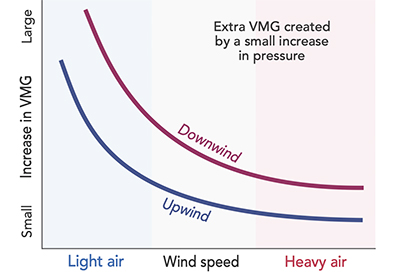
In most races, two key strategic variables seem to have by far the biggest impact on boats’ overall success (or failure). These are wind velocity (‘pressure’) and changes in wind direction (‘shifts’).
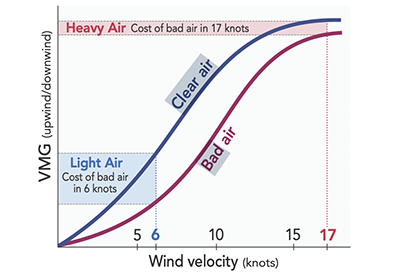
It’s clear that the more wind you have the faster you’ll go. That’s why sailors avoid the bad air of other boats. The problem with sailing in wind shadows is that you have less wind velocity than boats sailing in clear air. This hurts in two ways.
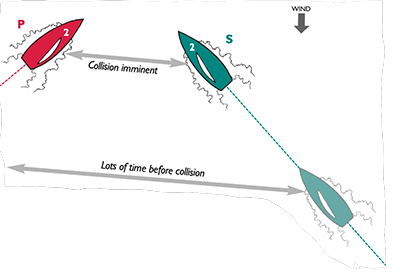
Here is a common situation that requires an important decision. You are sailing upwind on port tack, converging with another boat on starboard tack (S). If you keep sailing straight you will hit the other boat, so you must make a choice about how you will keep clear of S.
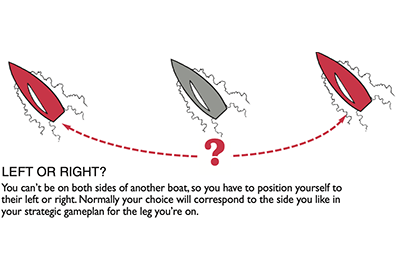
When you are trying to beat a boat that’s just ahead or behind, you have to consider strategy, not just tactics. In the same way that you want to be on the ‘favored’ side of the fleet, you should put yourself on the ‘favored’ side of any boat that you are trying to pass.
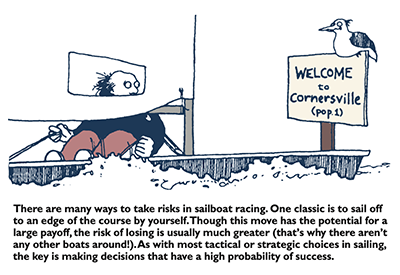
One definition of risk is ‘exposure to the possibility of loss.’ That basically sums it up for sailboat racers. When you take a risk, you are accepting the chance that you will lose something you have – boats, time, you’re standing in the series, a chance to catch up, etc.
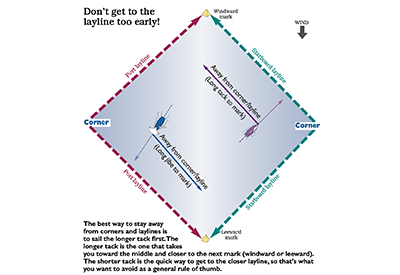
It’s impossible to round any mark without getting to the layline first. But the big question, both tactically and strategically, is how far you should be from the mark when you reach that layline. There’s a huge difference between making your final approach from three lengths versus 30 lengths.
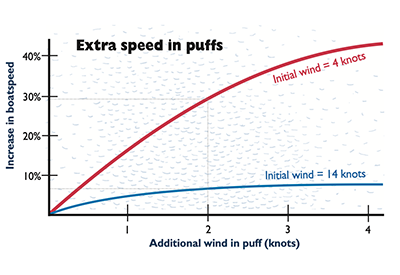
You’re sailing upwind on port tack on the first beat of a race, and it feels like you are on a pretty good lift. However, when you look toward the left side of the course, you see a small increase in wind pressure. Should you keep sailing on the lift, or tack to head for a little more breeze?
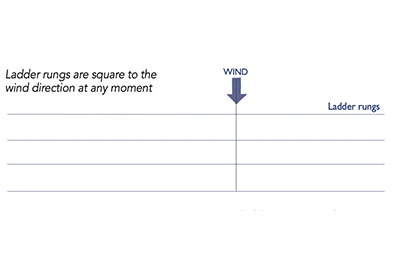
Ladder rungs are great tools for understanding how the wind direction affects boats racing up- wind or downwind. On most days the wind shifts constantly, even when it seems relatively steady, so ladder rungs (and the corresponding positions of boats in the fleet) are also changing continuously.
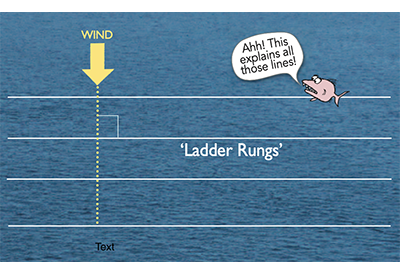
The race course for sailboats is similar to a playing field for baseball or football but in sailing there are no fouls lines or yard markers visible on the course. For critical boundaries like the starting line or zone around a mark, sailors must rely on their imagination and judgement.